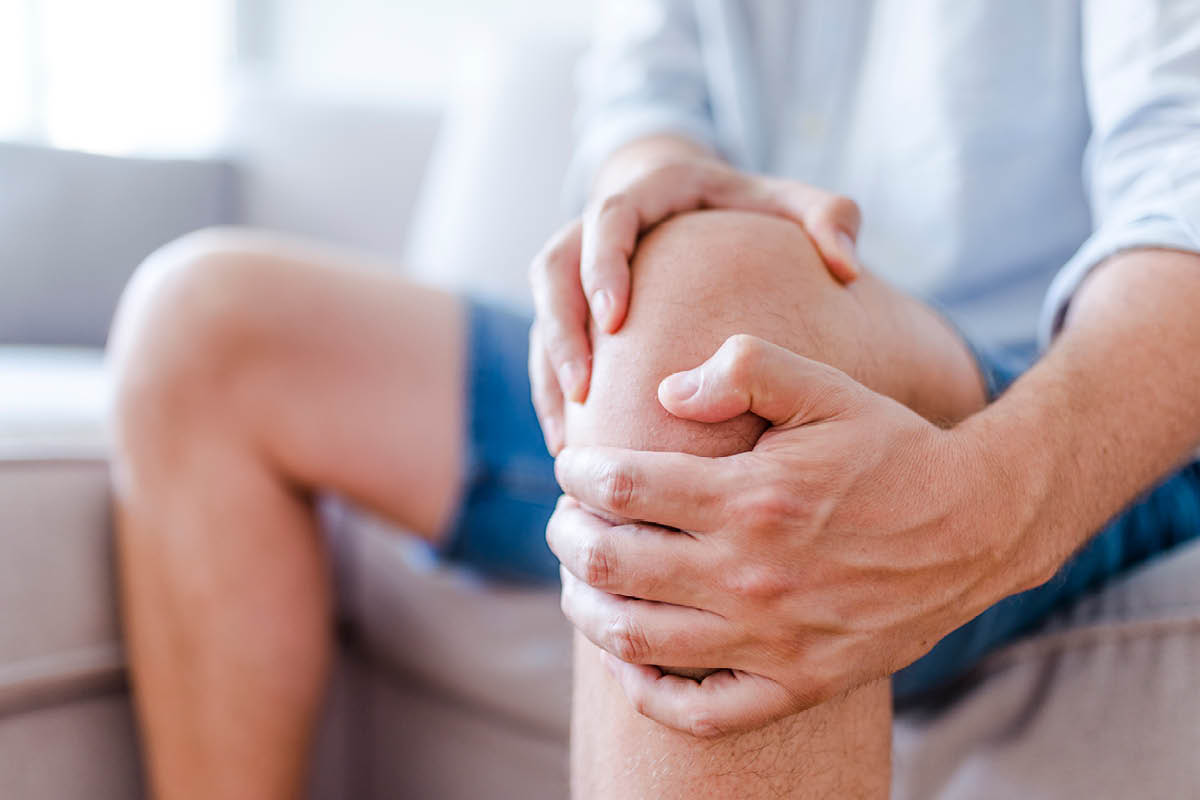The Medical Minute: Seven surprising facts about osteoarthritis

For many people ages 50 and over, pain and swelling in the hip, knee, fingers or feet may be signs of osteoarthritis, the most common type of arthritis. It occurs when the cartilage that cushions the joints begins to wear down, often gradually. In addition to pain, it causes joint stiffness and loss of motion.
Osteoarthritis affects women more than men, yet the exact causes are unknown. “There is probably a large genetic component that doctors don’t quite yet understand,” said Dr. Lucas Nikkel, an orthopedic surgeon at Penn State Health Bone and Joint Institute.
No cure for osteoarthritis exists, but many treatments can help people manage the pain and stiffness that often occur. Here are seven surprising facts about osteoarthritis:
- It’s different from other types of arthritis. Osteoarthritis is degenerative, occurring over time. It’s different from rheumatoid arthritis (RA), an autoimmune condition that causes the body to attack the lining of the joints. Yet the symptoms of osteoarthritis can mimic those of RA—to a point. “RA can cause greater deformities in the fingers, thumbs or toes, than osteoarthritis,” said Nancy Olsen, a rheumatologist at Penn State Health Milton S. Hershey Medical Center.
- Arthritis pain may not occur until the condition is fairly advanced. Severity of arthritis is often graded based on an X-ray, which in early arthritis may show slight narrowing of the joint or small bone spurs. In the later stages of osteoarthritis, most or all of the cartilage is gone. In late stages, X-rays often show large bone spurs and loss of the space between bones, commonly referred to as “bone-on-bone.” Some people experience arthritis pain and stiffness before loss of significant cartilage; others don’t have any symptoms until there is no cartilage remaining. A few patients don’t experience pain but note stiffness and loss of motion in the affected joints.
- Losing weight can reduce pain. People with a body mass index (BMI, a measure of body fat based on a person’s height and weight) of 30 or greater are at higher risk for developing osteoarthritis because of the pressure excess weight puts on the joints. Yet losing even a small amount of weight may ease discomfort. “A weight loss of just 5% of body weight can create a 25% reduction in pain,” Nikkel said.
- Not all pain relievers are equal. Over-the-counter pain medicines are often the first line of treatment. Non-steroidal anti-inflammatory medications (NSAIDs) such as ibuprofen (Advil) or naproxen (Aleve) are examples. “Acetaminophen (Tylenol) does not have anti-inflammatory actions, so while it treats pain, it doesn’t combat the inflammation generated by osteoarthritis,” Olsen said. Oral prescription medications like celecoxib (Celebrex) or meloxicam (Mobic) may help, too. A topical prescription medication, diclofenac (Voltaren), can be useful for people with finger joint pain.
- Some injections work, others carry risk. Data shows that steroid injections, repeated every three months, or hyaluronic acid injections, given every six months, can bring relief for many people with osteoarthritis. Most health insurers will cover these treatments. The same is not true for platelet rich plasma (PRP) or stem cell injections. The American Association of Hip and Knee Surgeons advises against PRP or stem cell injections due to a lack of scientific evidence that they help, lack of FDA approval and high cost to patients since they are not covered by insurance. Some patients have suffered serious infections after stem cell injections, Nikkel said.
- Exercise and physical therapy help. Exercise can improve flexibility and balance, and therefore ease pain. “Joints work well because of the muscles,” Olsen said. “The stronger the muscles, the longer a person can use that joint.” Water aerobics is effective because it moves the muscles without putting weight on the joint.
- Surgery is effective. “Joint replacement surgery is one of the most successful operations in medicine,” Nikkel said. Hip replacement surgery, for example, has a 98% success rate. Knee replacement also carries a high success rate. Yet surgery should be the last step in treatment. Knee replacement works best for people over age 55 with advanced arthritis who don’t get relief from non-surgical treatments.
Related content:
- The Medical Minute: Non-surgical treatment of osteoarthritis
- The Medical Minute: Weight loss and exercise can help prevent knee problems
The Medical Minute is a weekly health news feature produced by Penn State Health. Articles feature the expertise of faculty, physicians and staff, and are designed to offer timely, relevant health information of interest to a broad audience.
If you're having trouble accessing this content, or would like it in another format, please email Penn State Health Marketing & Communications.
